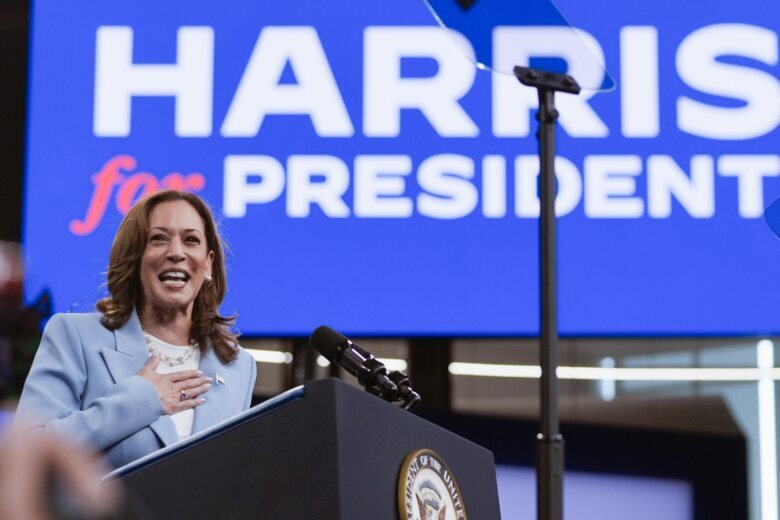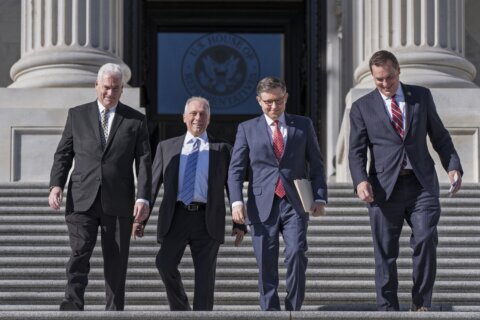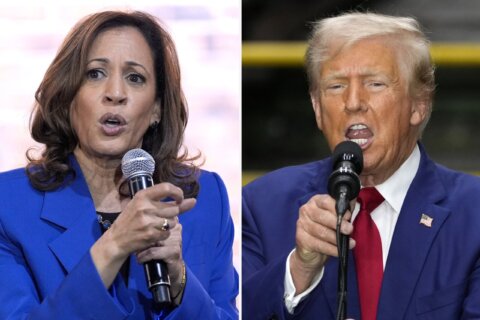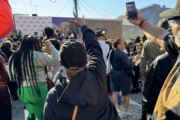Visit WTOP’s Election 2024 page for our comprehensive coverage. Listen live to 103.5 FM for the latest. Sign up for WTOP’s Election Desk newsletter for headlines and analysis from now until Inauguration Day.
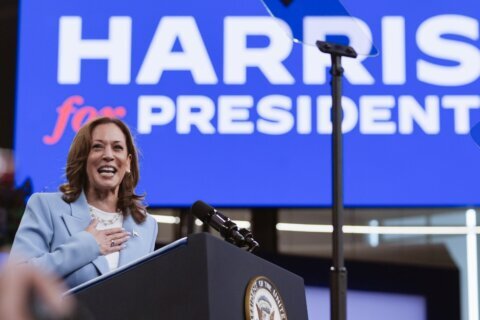
WASHINGTON (AP) — Democratic delegates have selected Vice President Kamala Harris to be the party’s presidential nominee, according to final vote results released late Monday by the Democratic National Committee. But don’t expect a balloon drop just yet.
Harris officially claimed the nomination following a five-day online voting process, receiving 4,563 delegate votes out of 4,615 cast, or about 99% of participating delegates. A total of 52 delegates in 18 states cast their votes for “present,” the only other option on the ballot.
Harris had already secured the majority of votes needed to claim the nomination by Friday afternoon, DNC Chair Jaime Harrison announced in a live video presentation that day to mark the milestone, but the result was not official until after the voting period closed at 6 p.m. ET on Monday.
Delegates to the Democratic National Convention began casting votes on Thursday to select their nominee for president, but unlike in past years, they did so not in the raucous party atmosphere of the convention floor or even during the convention itself. Instead, they participated in what the party called a “virtual roll call,” filling out electronic ballots from their homes, offices or vacation spots more than two weeks before the first delegate steps foot inside Chicago’s United Center.
Harris was the only candidate eligible to receive votes after no other candidate qualified by the party’s deadline.
How did the virtual process work?
Delegates used an electronic voting method the party says was similar to one used to tally virtual roll call votes in the 2020 convention, when the COVID-19 pandemic forced the party to conduct much of its official business remotely.
Under new procedures adopted by the convention’s rules committee in late July, candidates had until July 30 to declare their intent to seek the nomination and until that night to electronically submit the 300 delegate signatures required to qualify for the roll call vote. According to a DNC statement, Harris submitted signatures from 3,923 delegates, about 84% of the full delegation and 99% of delegates who signed a petition.
Under party rules, where only officially nominated candidates were eligible to receive votes, votes cast for someone other than Harris in the roll call were counted as “present.”
Who voted?
Among those eligible to vote were close to 4,000 pledged delegates selected through state primary and caucus processes as well as more than 700 others who have automatic delegate slots by virtue of the elected office or party positions they hold. These include Democratic governors, U.S. senators and representatives, former presidents and DNC members.
These automatic delegates, known informally as superdelegates, were the subject of much debate within the party for years because of their potential to influence the outcome of a close nomination fight despite not having been selected for their posts through a public process. Historically, however, superdelegates have never backed a candidate for the nomination other than the one who also earned the majority of pledged delegates.
After the 2016 election, the party passed changes that allowed superdelegates to vote only on the second and subsequent ballots. Party rules do allow superdelegates to vote on the first ballot if a candidate has either won a majority of pledged delegates through the primary and caucus process, like President Joe Biden did, or submitted the signatures of a majority of total delegates, as Harris did.
Where did the “present” votes come from?
The state with the highest number of votes cast for “present” was Minnesota, the home state of Harris’ vice presidential running mate, Gov. Tim Walz. During the primaries, the “uncommitted” ballot option won 11 of the state’s delegates. Washington state had the next highest number of “present” votes with nine, followed by Hawaii with six. Those states also had delegate slots allocated to “uncommitted” during the primaries.
A total of 80 delegates from 23 states did not cast votes in the virtual roll call. Harris’ home state of California had 11 delegates who did not cast votes, followed by Michigan with 10, New York with nine and Pennsylvania with eight.
What about the nominee for vice president?
Following the certification of the virtual roll call vote, Harris officially nominated Walz as her running mate. Delegates did not cast votes to ratify her choice. Instead, the new convention rules allowed convention chair Minyon Moore to certify Walz as the vice presidential nominee.
Both Harris and Walz officially accepted the nominations on Tuesday, according to a DNC statement.
The Democratic ticket will now head out on a seven-state swing of key battlegrounds, including Pennsylvania, Arizona and North Carolina, this week.
Why did this happen before the convention?
DNC officials first indicated in May that they would conduct a virtual roll call to clear a potential hurdle in getting the Democratic nominee on the ballot in Ohio. Ohio’s deadline to file for the general election ballot is Wednesday, two weeks before Democratic delegates would have crowned the nominee at the convention.
Although the deadline had been modified in previous presidential election years to accommodate late-summer conventions of both parties, this year state Republicans initially planned to enforce the existing deadline, with one GOP lawmaker calling the scheduling bind “ a Democratic problem.”
The Republican-controlled Legislature did eventually make the change at the behest of Republican Gov. Mike DeWine, but the law does not go into effect until Aug. 31. Citing concerns that Ohio Republicans could still try to block their candidate from getting on the ballot despite the legislative fix, DNC officials moved forward with their virtual roll call as originally planned.
So what happens at the convention?
The main order of business at any national party convention is officially selecting nominees for president and vice president and for the nominees to deliver speeches accepting their nominations.
Typically, the process of voting for the nominee is done publicly, with a live roll call vote in which state delegations cast their votes from the convention floor with much fanfare. This year’s pre-convention vote for the Democratic nominee was conducted behind closed doors, with results released only at the conclusion of the vote, instead of the real-time vote updates that have been a fixture of past convention roll call votes.
Still, in this year’s virtual roll call, as with in-person roll calls going back decades, the outcome of the vote was essentially known long before the first vote was cast. Despite the period of uncertainty immediately following Biden’s withdrawal from the race, an AP survey indicated that delegates overwhelmingly coalesced behind Harris to replace Biden on the ticket, leaving little suspense heading into the online vote.
The DNC says the convention will feature a ceremonial roll call vote, mimicking the look of a traditional convention roll call. Harris will still deliver an acceptance speech on the last day of the convention.
In addition to participating in the ceremonial roll call, delegates will participate in a variety of other convention business, including adopting the party’s platform.
Copyright © 2024 The Associated Press. All rights reserved. This material may not be published, broadcast, written or redistributed.

